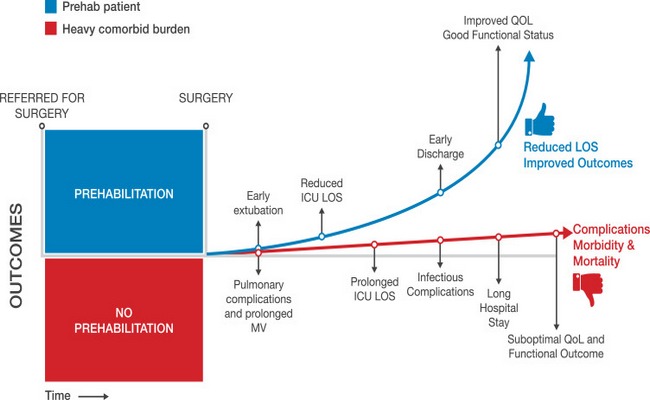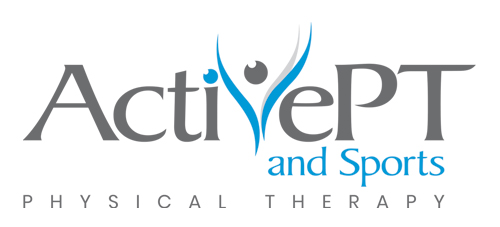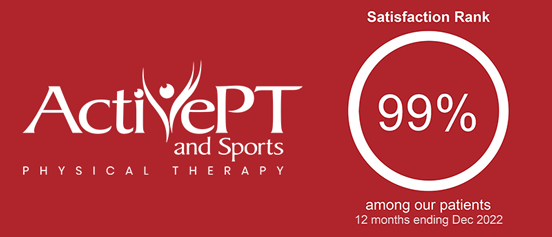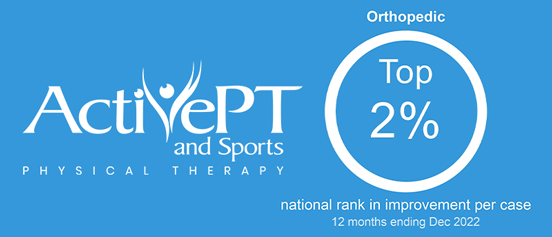By Garrison Jones, DPT, CSCS, Cert. DN
Avoid surgery at all costs! This is a common mantra, but sometimes surgery is the best or only option if you want to keep your body moving. Whether you are planning an upcoming surgery, trying to prevent the need for surgery, or just want to stay healthy, learning all you can in advance is the best medicine.
Preventative exercise or rehabilitation can fall into three categories: prehabilitation, prevention, and preparation. Prehabilitation refers to keeping your entire body as strong and healthy as possible before injuries or early degeneration even starts. Prevention programs help reduce the need for surgery when a particular part of your body begins to show signs of wear and tear. When surgery is imminent, preparation therapy can help ensure you get the best possible results from your surgical procedure when surgery.
PREHABILITATION
“Prehab” is a term that is often confused with preparing for surgery. The intention of prehab is to actually keep people healthy before they even need surgery. A prehab training program focuses on preventing injury or slowing the early decline in joint/tissue health by tailoring your program to exactly what you need. This can be a program designed for your favorite sport or your lifestyle. It may be easy to think of how a prehab program would help a football or soccer player, but a prehab program can be equally as beneficial for non-athletes. Think of the repetitive stress on your body from your job or hobbies. A prehab program designed specifically for your lifestyle can help you become more flexible, strong, and less sore at the end of a work day. While personal trainers are often sought out to help with this type of program, physical therapists have medical training in addition to exercise education, making them leading experts at building programs to help reduce injury risk and pain.
PREVENT
By midlife, we often start feeling the effects that sports, work, and life have had on our body. Little signs of arthritis or wear and tear start to show up and we don’t feel quite as invincible. You may begin feeling the effects of being a youth baseball catcher by the time you are forty. Prevention programs focus on a known problem area, knee pain for example, helping to slow down and possibly prevent worsening of the issue. A program designed to keep your knees flexible and strong can help to reduce pain, bring nutrients to the joint, and improve overall joint health. Learning a specific program for your type of knee pain can make life in your 50’s, 60’s and beyond so much more enjoyable. Physical therapists create this type of program on a daily basis as part of a treatment program, while using hands-on treatment to reduce your pain. Seeking advice from a therapist that specializes in treating your specific type of pain is even more effective.

Source: Science Direct
PREPARE
Pre-surgical or pre-operative therapy focuses on getting the best results out of your upcoming surgery. If you are scheduled for surgery or know it’s in your future, start preparing now. It’s never too early or too late to prepare yourself for surgery. Those who prepare tend to achieve the best results, suffer fewer complications, and have more realistic expectations. The clinical practice guidelines for a total knee replacement recommends at least one pre-operative physical therapy visit to get the best results from your knee replacement. In this visit, you often learn the best stretching and strengthening exercises, before surgery, but also learn what to expect, needed equipment, how much help you will need and what your recovery will look like. Physical therapists most commonly see patients preoperatively who plan to undergo knee and shoulder replacements, spine surgery, shoulder surgery, and knee surgeries. Check out our swipe videos on Instagram for more ideas of pre-op and preventative upper body, core, and lower body exercises @activeptandsports.
CHOOSING THE RIGHT PRACTITIONER
You have a choice in your prehab, preventative, and pre-operative care, so learn how to choose your ideal therapy partner along this journey. As physical therapists, we often work with the same patients for many different issues over a lifetime and get to know one another well. Having a practitioner you can trust and who knows your lifestyle helps ensure your program will be tailored to your goals. Choosing a therapist who has special training and medical knowledge in the area of your problem can be important, especially if surgery is expected in the future. The best therapists use a combination of research, your goals, and the therapist’s experience to guide your care. Choose a practitioner who puts those three pieces together perfectly for you. If a doctor is writing an order for therapy, ask them to fax the order to your preferred provider. If you are not sure which type of program is right for you, start with a free screening appointment to meet with one of our experts in person or via a live video visit and get your questions answered today.
Garrison is a doctor of physical therapy, certified in Dry Needling, who practices in our Rochester – RAC and Spring Valley locations. With his background in strength and conditioning he has a passion for helping people reach their goals for health, fitness and optimal performance.




